Andrew Nicholas Oliver and Philip Edward Oliver, together known as the Oliver Twins, are British twin brothers and video game designers.

Centipede is a 1981 fixed shooter arcade video game developed and published by Atari, Inc. Designed by Dona Bailey and Ed Logg, it was one of the most commercially successful games from the golden age of arcade video games and one of the first with a significant female player base. The primary objective is to shoot all the segments of a centipede that winds down the playing field. An arcade sequel, Millipede, followed in 1982.

Scott Adams is an American entrepreneur, computer programmer, and video game designer. He co-founded, with then-wife Alexis, Adventure International in 1979. The company developed and published video games for home computers. The cornerstone products of Adventure International in its early years were the Adventure series of text adventures written by Adams.
An action-adventure game is a video game hybrid genre that combines core elements from both the action game and adventure game genres.

Mercenary is a 3D action-adventure game written for the Atari 8-bit computers and published by Novagen Software in 1985. It was converted to the Commodore 64, ZX Spectrum, Amstrad CPC, Atari ST, Amiga, and Commodore 16/116/Plus/4. The game uses vector graphics renderings of vast, sparse environments and has open-ended gameplay. It was also released as Mercenary: Escape from Targ and Mercenary: A Flight Simulator Adventure.
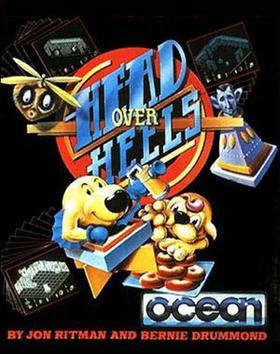
Head Over Heels is an action-adventure game published by Ocean Software in 1987 for several home computers. It uses an isometric engine similar to the Filmation technique first developed by Ultimate Play the Game. Head Over Heels is the second isometric game by Jon Ritman and Bernie Drummond, after their earlier Batman computer game was released in 1986. The game received favourable reviews and was described by Zzap!64 as an "all time classic".
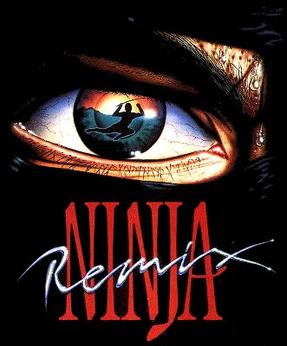
Last Ninja is a series of video games published by System 3. The first game in the series titled The Last Ninja, was released in 1987 for the Commodore 64 and was one of the most successful games for the system. In 1988, System 3 released Last Ninja 2, and in 1991 the third game in the series, Last Ninja 3. In 1990, Last Ninja Remix was released for 8-bit systems. This was Last Ninja 2 with new music, a new introductory sequence, slightly changed graphics and fixed bugs. Confusingly, the 16-bit versions of the original The Last Ninja game were also released in 1990 as Ninja Remix.

Knightmare is a video game released by Activision in 1987 for ZX Spectrum, Amstrad CPC, Commodore 64, and Atari ST. It was written by Mev Dinc, J.P. Dean, E.M. Dean and Nick Cooke, and is based on the Anglia Television show Knightmare. Four years later, Mindscape released entirely different game based on the show, also called Knightmare, for the Atari ST and Amiga.

Voodoo Castle is a text adventure and is the fourth in the series of adventure games designed by Scott Adams. The game was written by his wife Alexis Adams. The game was published by Adventure International in 1979. It was available for the VIC-20, the Commodore 64, Apple II, and other contemporary computers.

Pirate Adventure is a text adventure video game written by Scott Adams. It was published by Adam's company, Adventure International, in 1979.
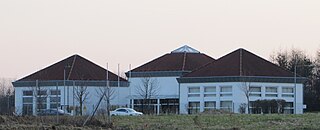
magnussoft Deutschland GmbH is a German computer game developer and publisher. The company is seated in Kesselsdorf, close to the Saxon capital of Dresden.
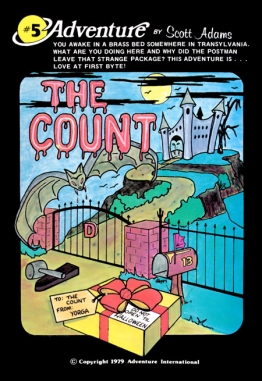
The Count is a text adventure written by Scott Adams and published by Adventure International in 1979. The player character has been sent to defeat the vampire Count Dracula by the local Transylvanian villagers, and must obtain and use items from around the vampire's castle in order to defeat him.

Myth: History in the Making is a 2D platform game developed and published by British publishing house System 3 for the Commodore 64, Amiga, Amiga CD32, Amstrad CPC and ZX Spectrum. It was also released on the NES as Conan: The Mysteries of Time. It was officially announced for Atari ST and a preview version was available, but the full version was never released.

Batman: The Caped Crusader is an action-adventure game developed by Special FX Software and published by Ocean Software in 1988. It was licensed by Data East and Erbe Software for release in North America and Spain. It was the second of three unrelated Batman games released by Ocean, after Batman in 1986 and preceding Batman: The Movie in 1989. The Apple II version was developed by California-based Quicksilver Software; it requires a 128k IIe or IIc to run. As with many other Ocean releases, the C64 port came in separate cassette and disk releases; the North American NTSC version was based on the latter. The disk version contained slightly remixed music and differences in enemy spawns.

Questprobe featuring The Hulk is a 1984 graphic adventure video game developed and published by Adventure International in collaboration with Marvel Comics. It is the first entry in Questprobe, an intended series of graphic adventure games that only released three installments before the developer's bankruptcy. The game's narrative follows the Marvel superhero Hulk and his human alter-ego Bruce Banner, who must explore the mysterious lair of the Chief Examiner. The graphics and story outline were created by Marvel artists and writers. Critical reception was generally positive, with much of the praise going to the visuals. Reactions to the gameplay were mixed, especially upon the game's budget re-release, by which time it was considered dated.
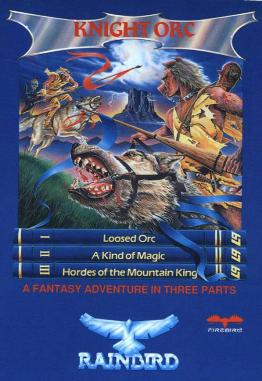
Knight Orc is a text adventure, with limited graphics on some platforms, by Level 9 released in 1987. It comes with a short novella by Peter McBride explaining the background to the story.

A Quiet Weekend in Capri is an adventure game in the Capri series by Italian developers Silvio and Gey Savarese, consisting of a navigable slideshow of screens a la Myst.
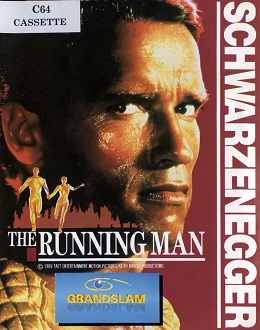
The Running Man is a 1989 beat 'em up video game based on the 1987 film of the same name. It was developed by Emerald Software and published by Grandslam Entertainments for Amiga, Amstrad CPC, Atari ST, Commodore 64, and ZX Spectrum.

Terminator 2: Judgment Day is a 1991 action video game developed by Dementia and published by Ocean Software. It is based on the 1991 film of the same name, and was released in Europe for Amiga, Amstrad CPC, Atari ST, Commodore 64, DOS, and ZX Spectrum. It is a sequel to The Terminator, itself based on the 1984 film of the same name. The game features several gameplay styles such as driving, fighting, and puzzle-solving.

















